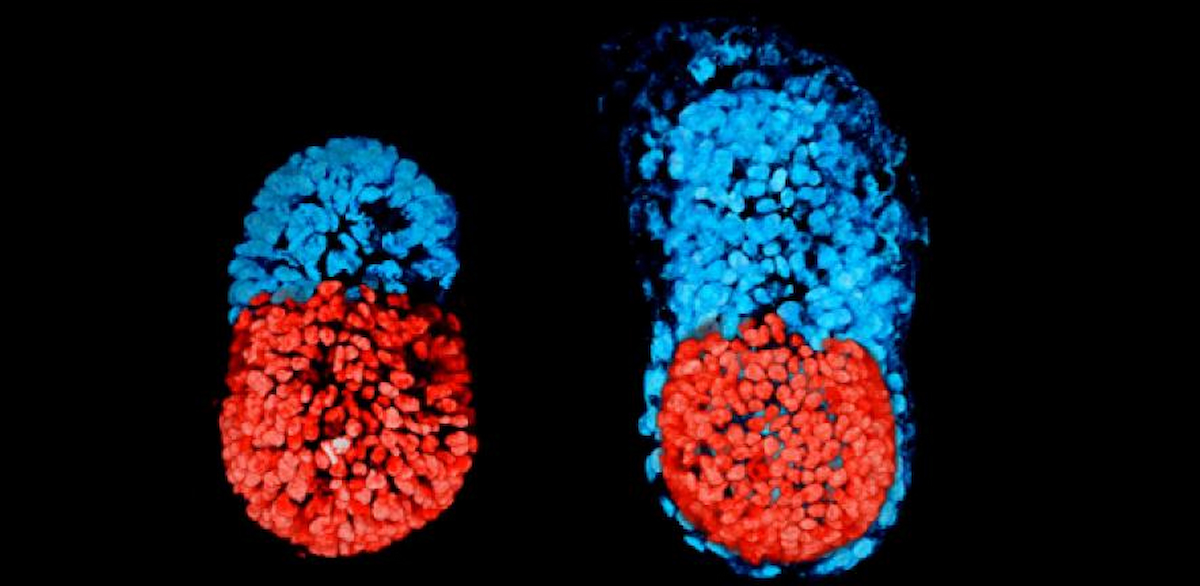Scientists have developed “synthetic” mouse embryos from stem cells without the father’s sperm, the mother’s egg, or the mother’s uterus. The lab-created embryos resemble a real mouse embryo up to 8 12 days after conception, including a heart-like structure.
In the near future, researchers plan to employ these so-called embryoids to better comprehend early phases of development and investigate disease causes without the usage of as many laboratory animals. The accomplishment could also pave the way for the eventual creation of synthetic human embryos for research purposes.
Llus Montoliu, a research professor at Spain’s National Biotechnology Centre who was not involved in the study, stated, “We are without a doubt confronting a new technological revolution that is still very inefficient… but has huge promise.” It is evocative of remarkable scientific advancements such as Dolly the sheep’s birth and others.
The most recent description of synthetic mouse embryos was published in the journal Nature by Magdalena Zernicka-Goetz of the California Institute of Technology and her colleagues. A similar study, conducted by Jacob Hanna and colleagues at the Weizmann Institute of Science in Israel, was published in the journal Cell earlier this month. Additionally, Hanna was a coauthor on the Nature study.
An expert in stem cell biology, Zernicka-Goetz, stated that one reason to study the early stages of development is to gain a better understanding of why the majority of human pregnancies are lost at an early stage and up to 70% of embryos created for in vitro fertilization fail to implant and develop. She stated that studying natural development is challenging for numerous reasons, including the fact that very few human embryos are donated for research and scientists are constrained by ethical considerations. Creating embryo models is an alternative method for investigating these difficulties.
To produce the synthetic embryos, or “embryoids,” disclosed in the Nature article, scientists mixed embryonic stem cells with two other types of mouse stem cells. This was accomplished in the laboratory using a special dish that allowed the three types of cells to combine. While not all of the embryoids they made were excellent, the best ones were “indistinguishable” from real mouse embryos, according to Zernicka-Goetz. In addition to the heart-like structure, they grow features resembling the skull.
“This is the first model that permits the study of brain development in the context of the developing mouse embryo as a whole,” she explained. The origins of this work date back decades, and both Zernicka-Goetz and Hanna reported that their groups have been conducting research in this area for many years. In November, according to Zernicka-Goetz, her group submitted a study to Nature.
Next, scientists will attempt to persuade the synthetic mouse embryos to develop beyond 8 12 days, with the ultimate objective of bringing them to term, which for a mouse is 20 days. At this point, they “battle to surpass” the 8 1/2-day threshold, according to Gianluca Amadei, a coauthor on the Nature research from Cambridge University. We believe we will be able to “get them over the hump” so they may continue to develop.
Scientists anticipate that embryos will die without a placenta after approximately 11 days of development, but they hope to one day find a means to manufacture a synthetic placenta. At this time, it is unknown whether synthetic embryos can be carried to term without the need of a mouse womb. Researchers said they do not foresee generating human versions of these synthetic embryos in the near future, but foresee it occurring eventually. Hanna described it as “the next logical step.”
Using human stem cells, other researchers have already created a “blastoid,” a structure resembling a pre-embryo that can serve as a research substitute. This type of work raises ethical considerations. Researchers have been led for decades by the “14-day rule” when generating human embryos in the laboratory. The International Society for Stem Cell Research advocated a limited relaxation of the rule last year. Scientists emphasize that creating a child from a synthetic human embryo is neither possible nor being considered.
“Perspective on this report is important because, without it, the headline that a mammalian embryo has been created in vitro could lead to the belief that humans will soon be able to do the same,” said developmental biologist Alfonso Martinez Arias of the Universitat Pompeu Fabra in Spain, whose group has developed alternative stem cell-based models of animal development.
“In the future, similar tests will be conducted with human cells, yielding comparable results,” he stated. This should prompt questions of the ethics and societal implications of these trials prior to their implementation.


